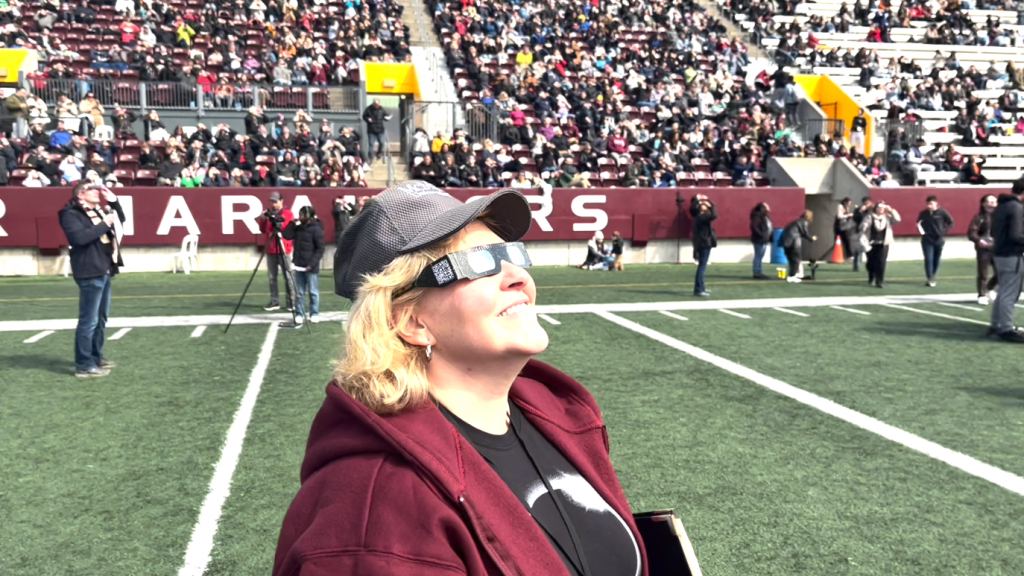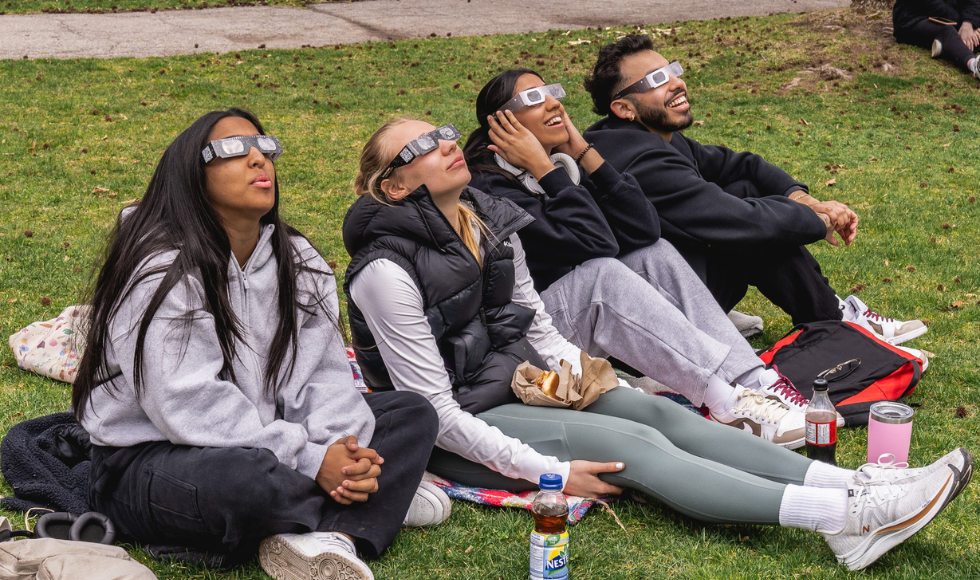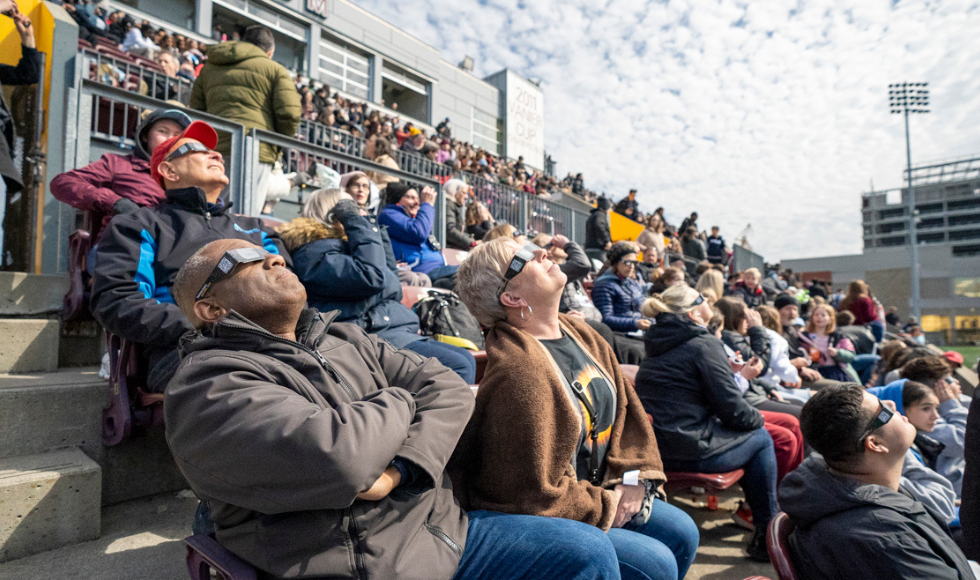Total solar eclipse: Photos of a once-in-a-lifetime experience at McMaster
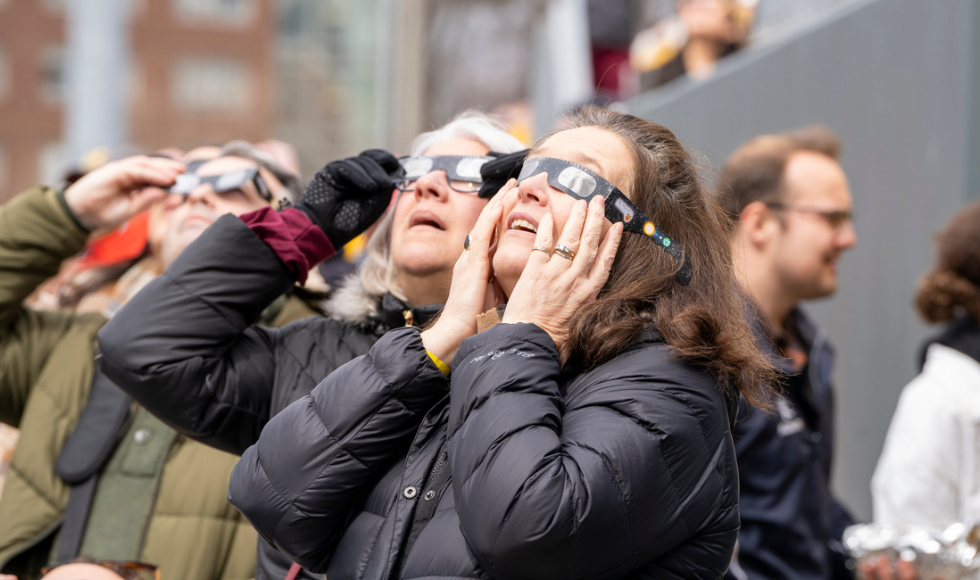
It was a day — and for 96 seconds, a night — to remember. Thousands of people gathered at Ron Joyce Stadium to experience a stunning total eclipse.
Photos by Georgia Kirkos and Kayla Da Silva
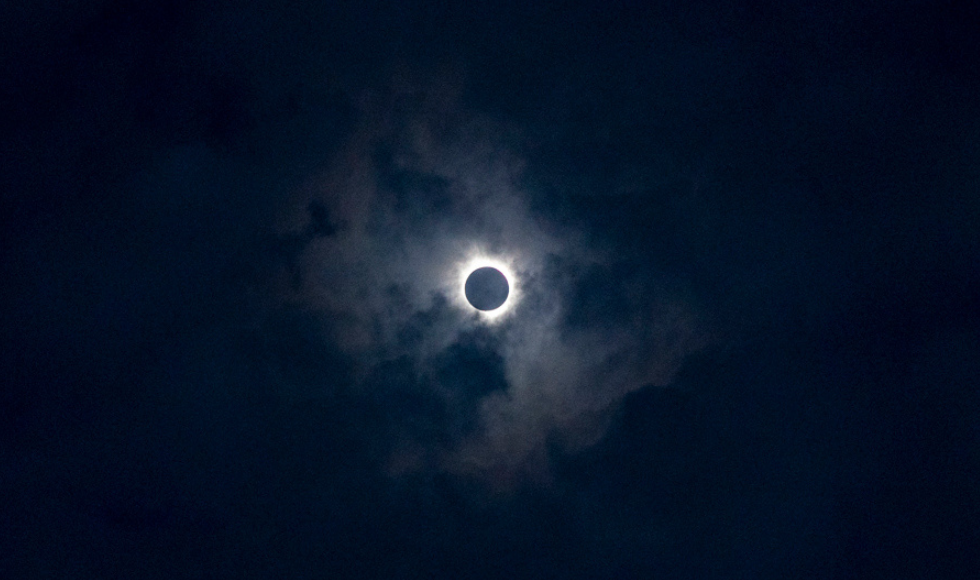
The refractive telescope was pointing the wrong way.
It’s okay: With no sun in sight and cloudy skies over Hamilton all morning, thousands of eclipse watchers at Ron Joyce Stadium were reconciled to having a less than perfect experience in the afternoon.
But then, right on time, the gloomy outlook turned around — and so did the telescopes.
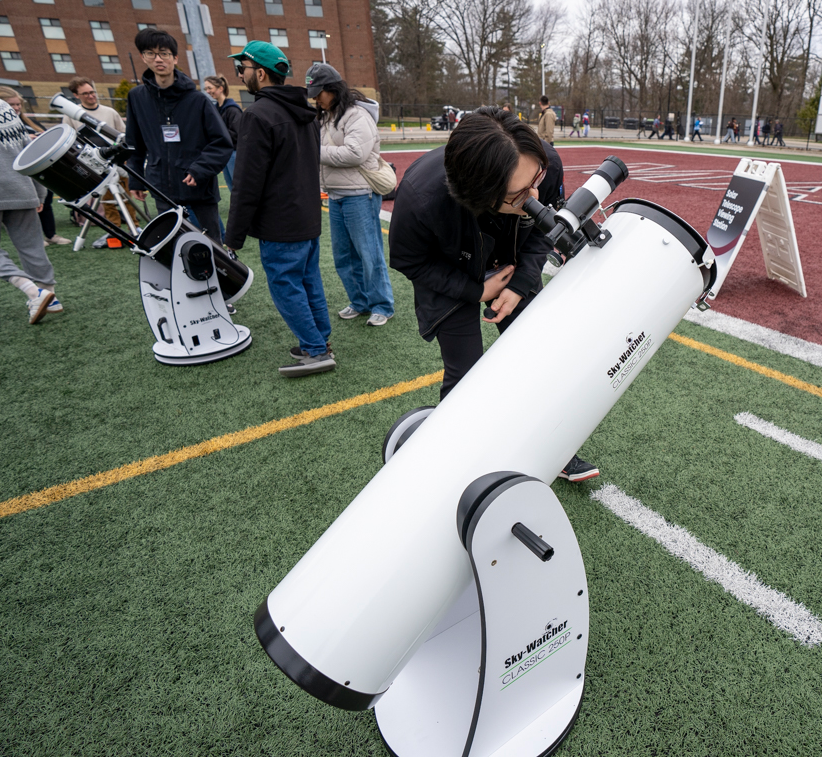
The high-powered refractive telescopes were just one stop of many on the field. There were also stations where kids could learn about phases of the moon using Oreo cookies, make their own pinhole cameras and craft paper plate masks to hold their eclipse glasses in place.

“This is the ultimate opportunity for astronomy outreach,” said Veronika Dornan, a Physics and Astronomy PhD student who also organized an event with the department’s mobile planetarium a few weeks ago.
“There are so many instances of so many Nobel Prize-winning astronomers stating that a total solar eclipse is what got them into astronomy, so this is a really exciting event for us to reach young people, old people — people from all walks of life and getting them interested in astronomy and potentially being the next big name in uncovering secrets of the universe.”
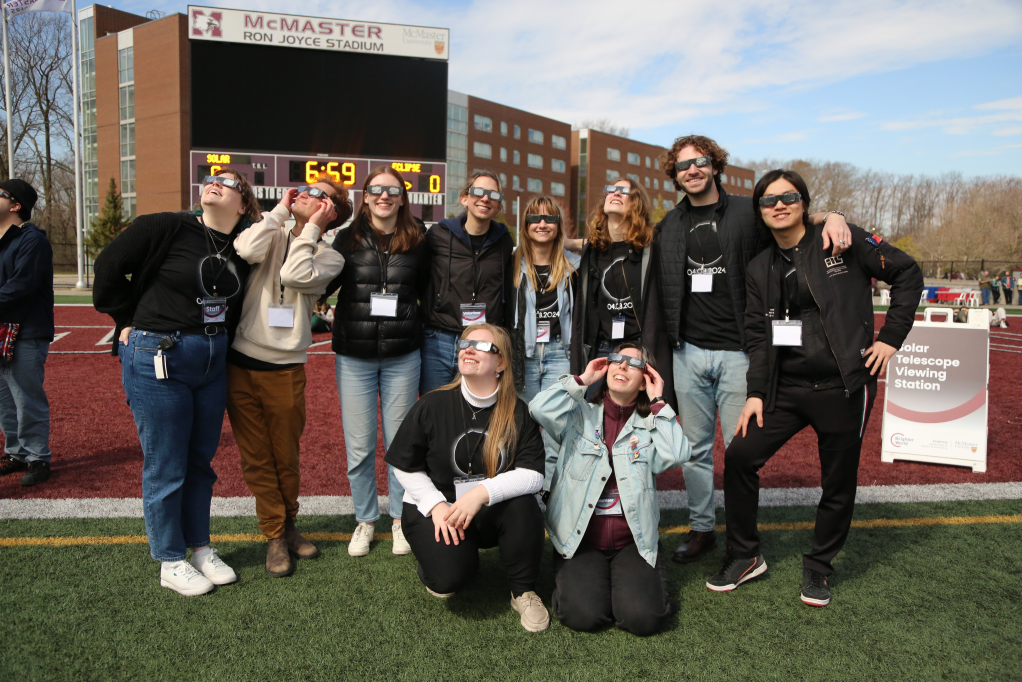
More than 5,500 people registered to share the once-in-a-lifetime experience at the McMaster viewing party on campus.
And it really was a party, with music, food, activities, face painting, kids running around on the field, friends meeting up, and a sense of anticipation in the massive crowd in the stands.
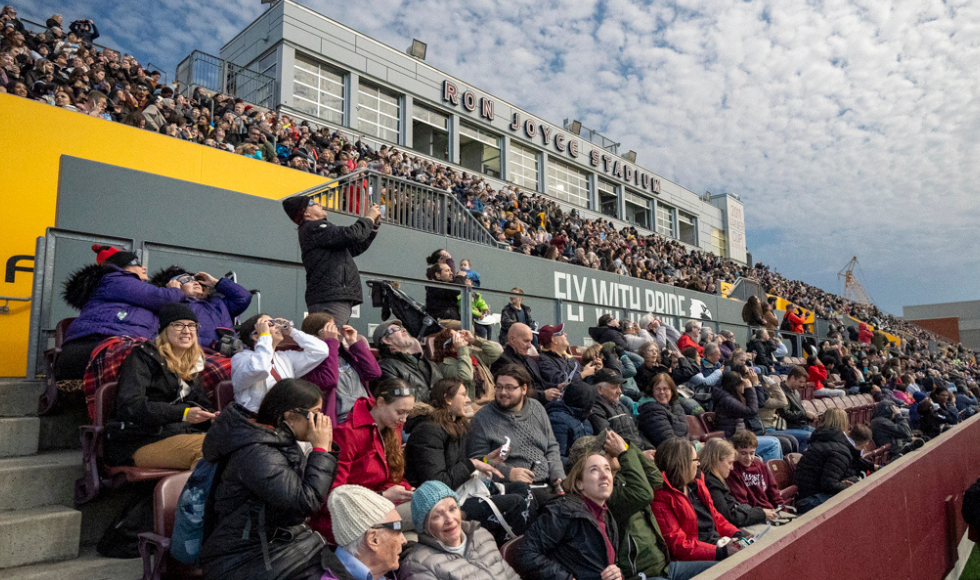
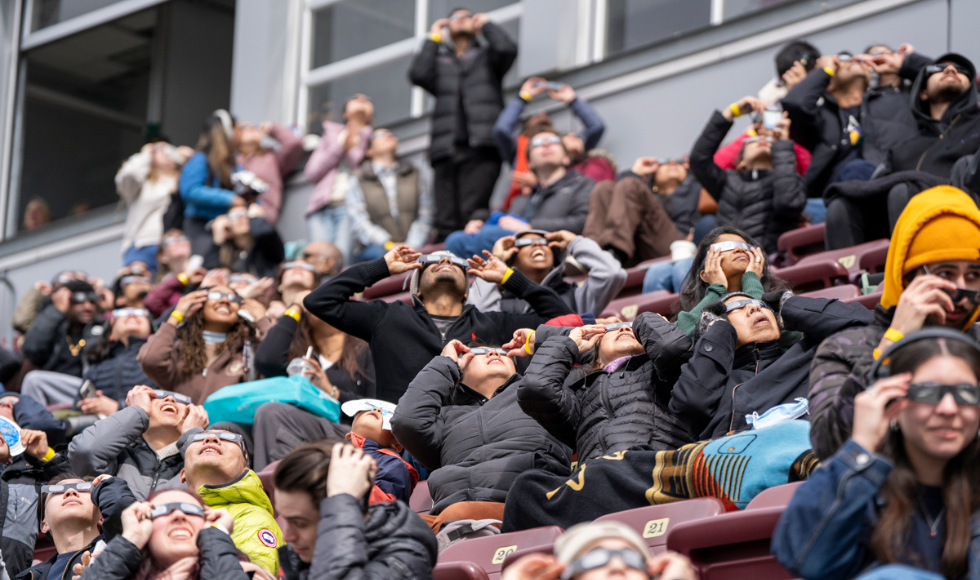

Close to 2 p.m., the clouds started parting to let a sliver of sunshine out, and every time it happened, the whole crowd would cheer.
And maybe the home crowd helped, because as the cheers swelled, the clouds thinned. By the time the moon got halfway to totality, everyone had a crystal clear view — through their eclipse glasses, of course.
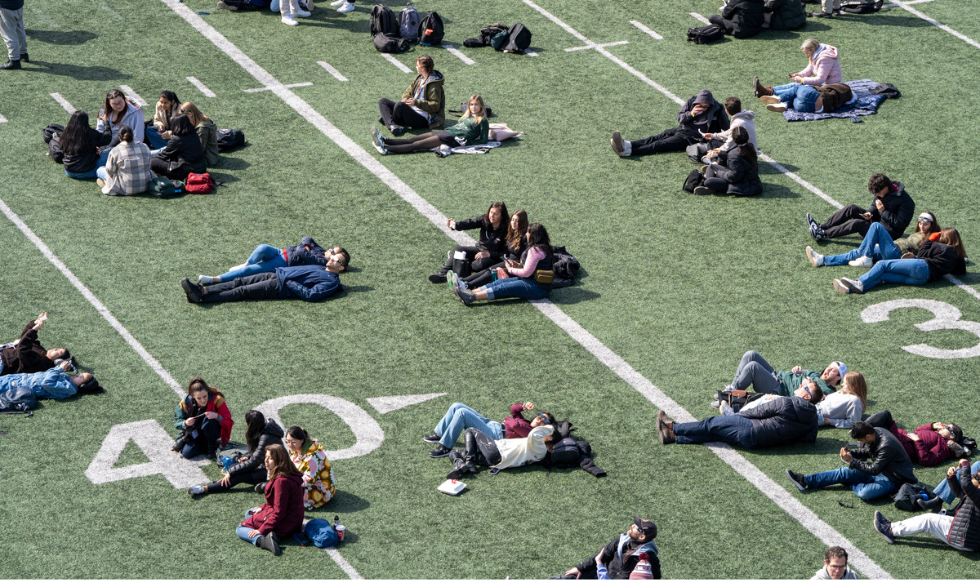
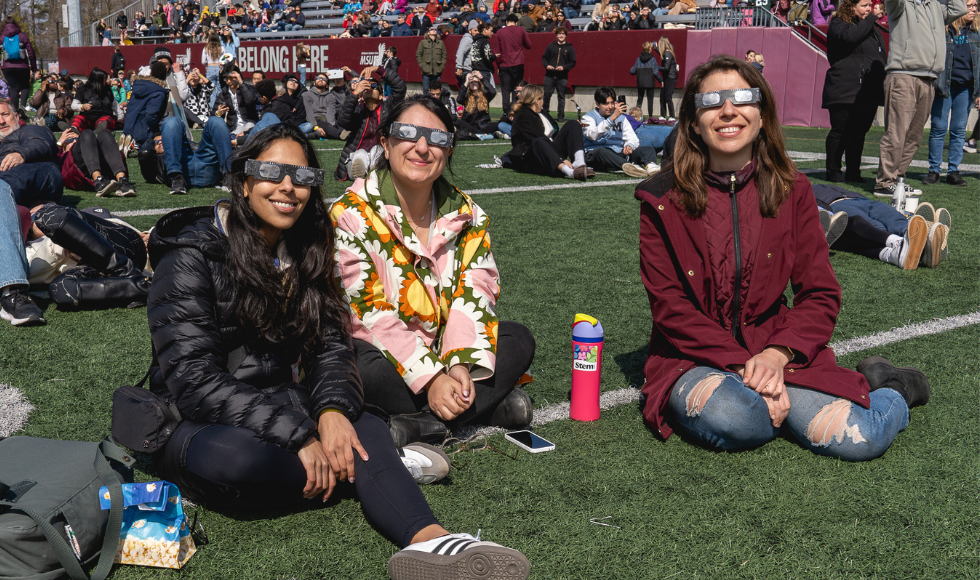
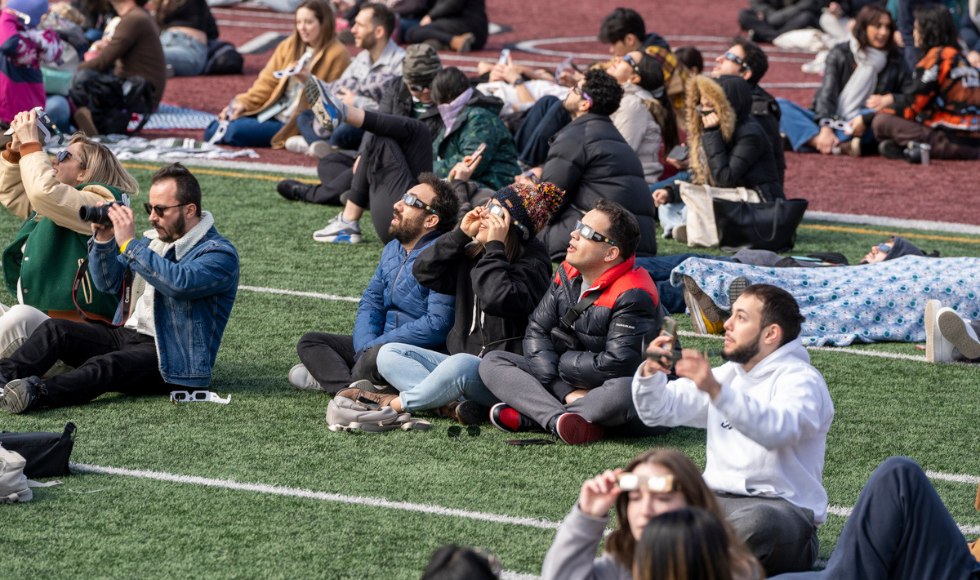
Student Jonathan “JJ” Jeyapalan MC-ed, and Physics and Astronomy professor Rob Cockcroft talked the crowd through what to expect at each stage of the eclipse.
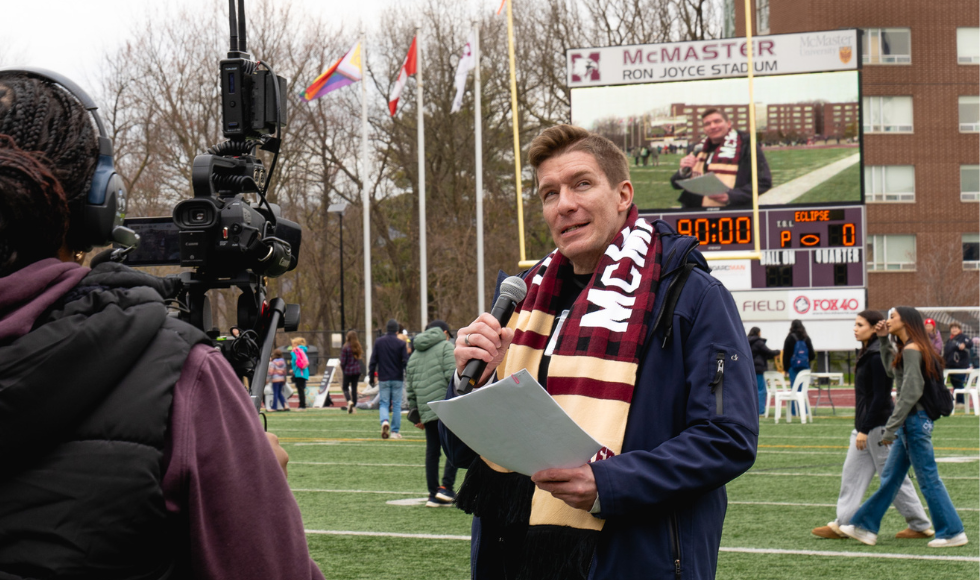
As the crowd counted down the final seconds, day rapidly turned to evening and then to night. There were audible oohs and aahs; eclipse glasses came off. Some phone screens came on, but most eyes were on the skies, where the sun and moon created the perfect ring of light, framed by clouds — and the Peter George Centre for Living and Learning.

Just over 90 seconds later, night quickly brightened back into day, and soon enough it was just another sunny afternoon. People hugged; they fist-bumped. They got up and stretched.
They shared an incredible experience.
